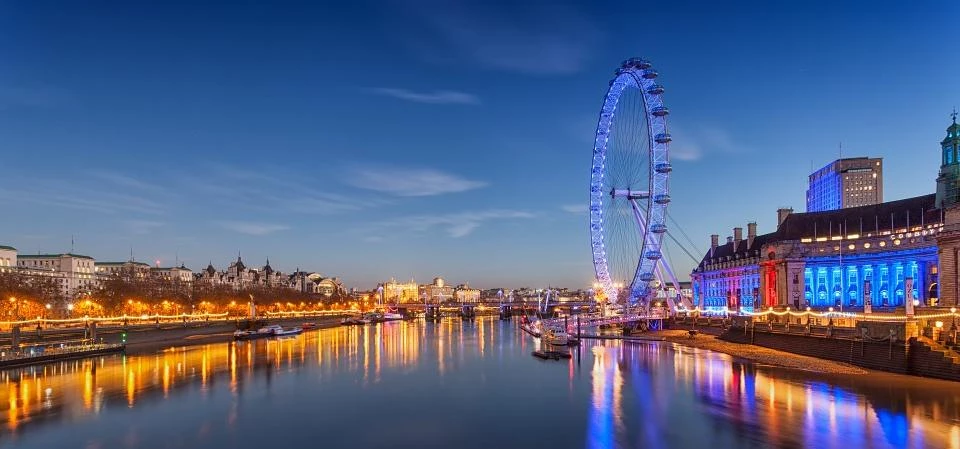
Partner Article
Turning London into a data-driven city
London – a city of hopes, dreams and a vast number of inhabitants – and it’s growing. Already one of the world’s most notable metropolises, the Greater London Authority says London is currently home to 8.6 million people, but this figure is predicted to reach 11 million by 2050. That’s not even taking into consideration London’s booming tourism economy; a recent study found that London has become the second most visited city in the world, receiving almost 17.4m visitors in 2014.
With so many people crowded into one place, the challenges faced by the London Mayor and his team are immense. Just think about some of the following statistics and insights:
London’s busiest railway station, Waterloo, sees around 82 million passengers per year There are so many children at a school age that just over half (51%) of all local government spending in the capital goes on education The housing gap continues to be a major challenge with an increase of 540,000 households in London over ten years but only 430,000 new homes built.
With the upcoming Mayor of London and London Assembly Elections taking place on 5th May this year it will be interesting to follow the candidates’ proposals to tackle London’s issues while retaining its crown as one of the leading cities in the world. I applaud recent proposals to mimic some of New York City’s initiatives such as appointing a Chief Digital Officer, and to turn London into a ‘Smart City’ using data-driven analysis to run it. Regardless of who wins the election, data analysis must be a key part of the future Mayor’s strategy, drawing on insights – such as those referenced above – to create a better-run (and smarter) city.
Becoming a smarter city can take many forms. This could be by fitting sensors on objects such as traffic and street lights throughout a city so public transportation departments can conduct digital road experiments or even fitting sensors on bins so collection services can be optimised. Amsterdam’s fire brigade, for example, maps the risks in the city by capturing information from 600,000 objects such as buildings, railways and roads, so they can respond better in emergencies. Or it may even be through improving hospitals within cities. Within the NHS we’re seeing some Trusts such as Wrightington, Wigan and Leigh NHS Foundation Trust use data analysis to reduce A&E waiting times, which in turn helps them improve patient care for local residents.
There’s no denying London has already taken steps to make the city smarter – the introduction of Oyster cards being a good example of this when it comes to trying to reduce rush hour congestions – but we will need to see more in the next office. Countries such as Singapore and Barcelona are making huge strides in creating silicon metropolises and we will need to see this passion replicated here.
It may even help candidates politically in the long run. As former New York mayor Michael Bloomberg announces this week that he is considering running for the US presidency, it’s significant that the data-driven technocrat was a champion of New York’s Smart City initiatives. During his term as mayor there’s no denying that he improved and streamlined various systems and operations throughout the city, and a lot of this was achieved by his ambition to modernise the city by making decisions based on reliable data.
For London, to remain competitive when faced with such a huge – and growing – population and competition from other growing ‘smarter’ cities, the next London Mayor will need all the help he or she can get. And a data-driven strategy will be central to delivering this vision of a smarter London city.
By Sean Farrington, MD UKI and RVP Northern Europe, Qlik
This was posted in Bdaily's Members' News section by Sean Farrington .
Enjoy the read? Get Bdaily delivered.
Sign up to receive our popular morning London email for free.








 Time to stop risking Britain’s family businesses
Time to stop risking Britain’s family businesses
 A year of growth, collaboration and impact
A year of growth, collaboration and impact
 2000 reasons for North East business positivity
2000 reasons for North East business positivity
 How to make your growth strategy deliver in 2026
How to make your growth strategy deliver in 2026
 Powering a new wave of regional screen indies
Powering a new wave of regional screen indies
 A new year and a new outlook for property scene
A new year and a new outlook for property scene
 Zero per cent - but maximum brand exposure
Zero per cent - but maximum brand exposure
 We don’t talk about money stress enough
We don’t talk about money stress enough
 A year of resilience, growth and collaboration
A year of resilience, growth and collaboration
 Apprenticeships: Lower standards risk safety
Apprenticeships: Lower standards risk safety
 Keeping it reel: Creating video in an authenticity era
Keeping it reel: Creating video in an authenticity era
 Budget: Creating a more vibrant market economy
Budget: Creating a more vibrant market economy